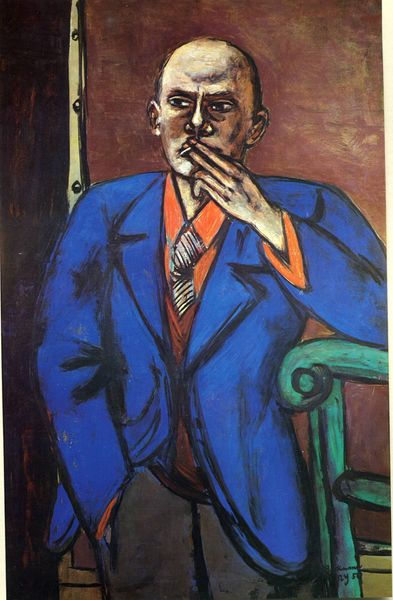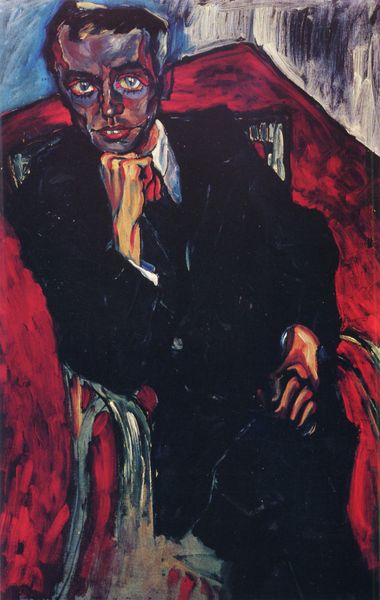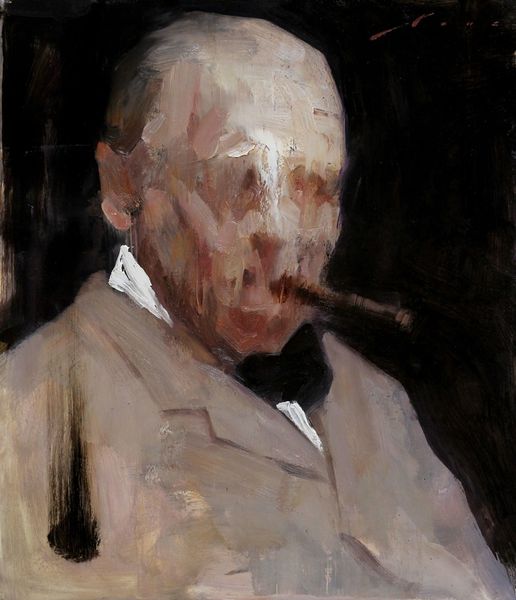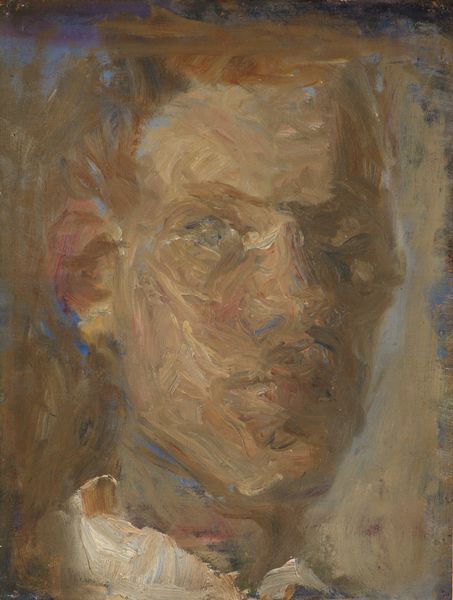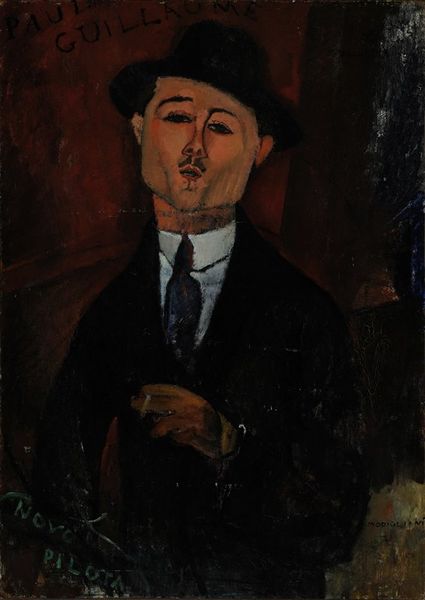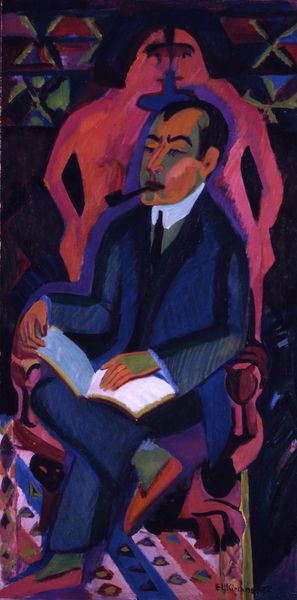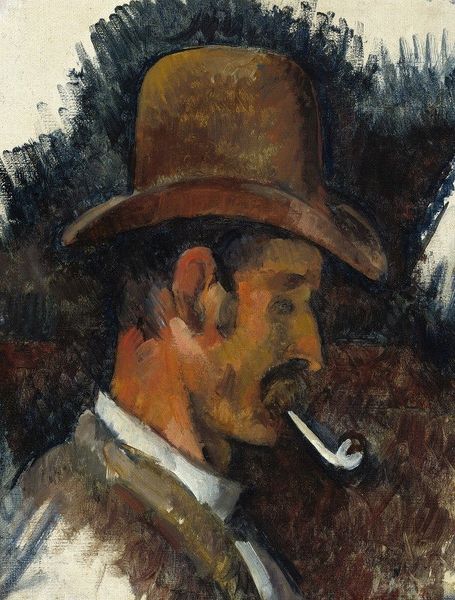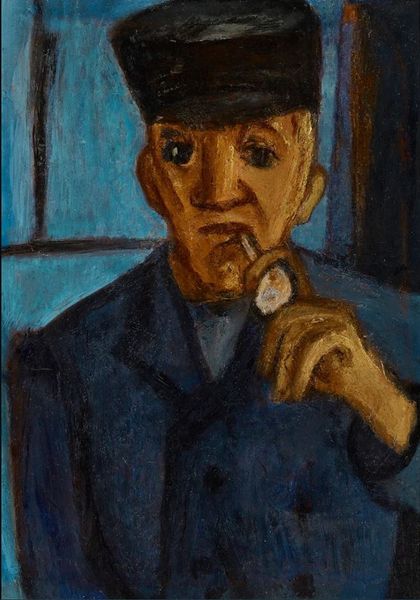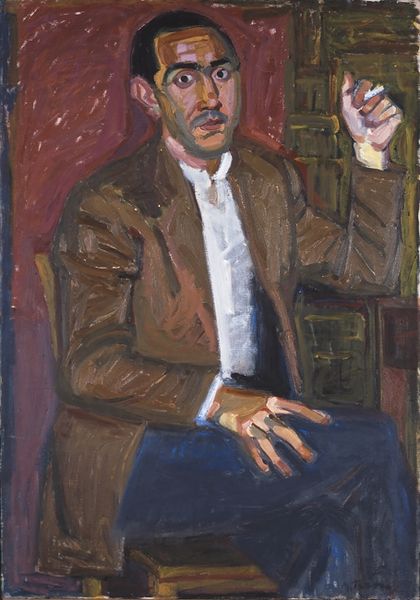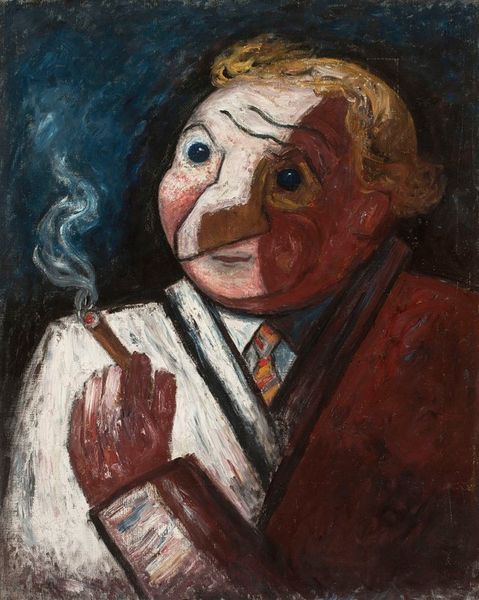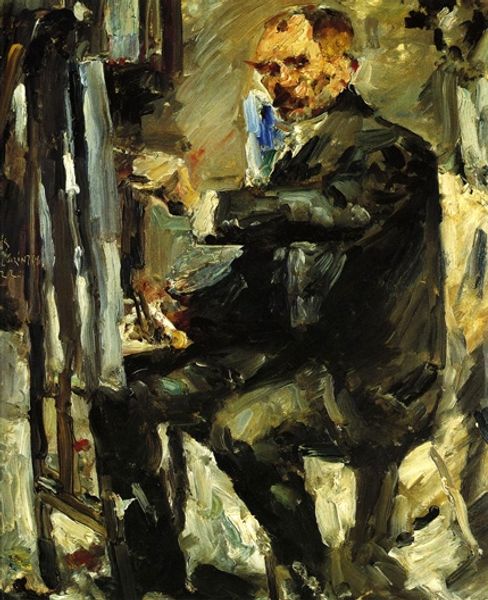
oil-paint
#
portrait
#
oil-paint
#
german-expressionism
#
oil painting
#
expressionism
#
portrait art
Dimensions: 66 x 38.5 cm
Copyright: Public domain
Curator: This painting is "Fellow Soldier," completed by Walter Gramatté in 1917 using oil paint. Editor: My first impression is how brooding this piece is. The color palette feels constricted, mirroring the heavy mood I think the artist was trying to convey. And the eyes... those are full of a strange mixture of anger and anxiety. Curator: Precisely. Gramatté painted this during the First World War, so the palpable sense of dread isn't surprising. Expressionism allowed artists to viscerally depict emotion; you really get that sense of a man worn down by conflict here. The setting itself hints at the historical context. Editor: Those clasped hands—I find them almost sculptural. Notice how they become a visual anchor. They seem to carry the weight of unseen burdens, both physical and emotional, maybe loss? This pose isn’t just a physical presentation; it's a symbol. Curator: That’s astute. The portrait departs from earlier traditions of idealized heroism, replacing it with an image that portrays human fragility, not only highlighting but celebrating those feelings of suffering. His art actively questions the status of conflict itself, pushing it out of a triumphant past into the darker implications of human suffering. Editor: Looking closer, I see how he used complementary colors – greens and reds, for instance, clash beside each other which brings a feeling of instability to the image. In an Expressionist style, it makes perfect sense, everything is about feelings. Curator: Gramatté was living in a moment where artistic language was actively being remade and pushed toward what the war meant and did to communities. The war had become its own sort of symbol: a symbol of despair, which he represents here so plainly. The composition and dark colors only amplify this message of cultural shift. Editor: Reflecting on it, the "Fellow Soldier" serves as a haunting symbol for an entire generation marked by trauma, challenging the viewer to consider war’s personal toll beyond the grand narratives we often hear. Curator: A necessary reflection in times of conflict, and a reminder that history isn’t merely a list of events, but a tapestry of individual experiences woven together.
Comments
No comments
Be the first to comment and join the conversation on the ultimate creative platform.
